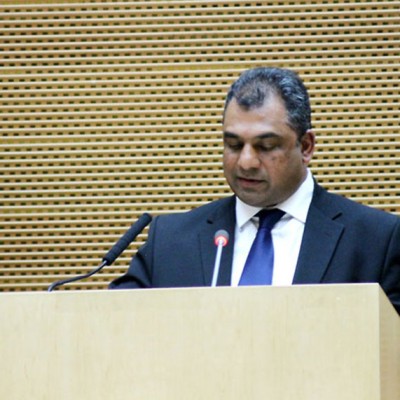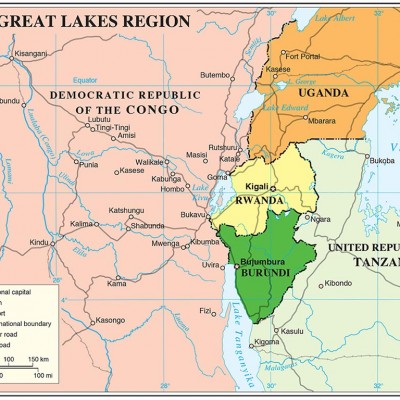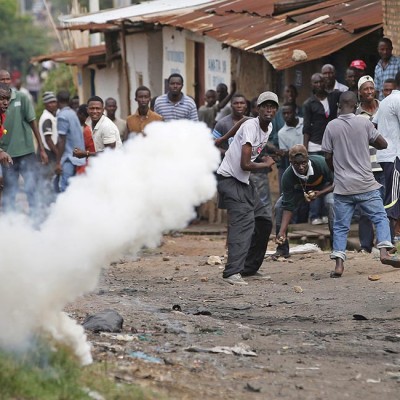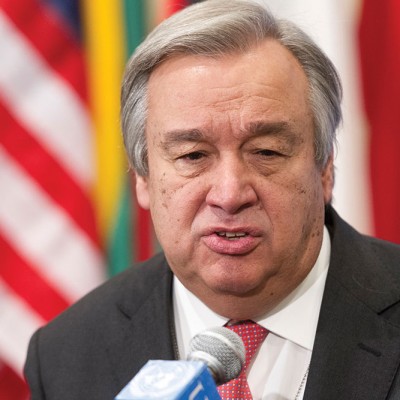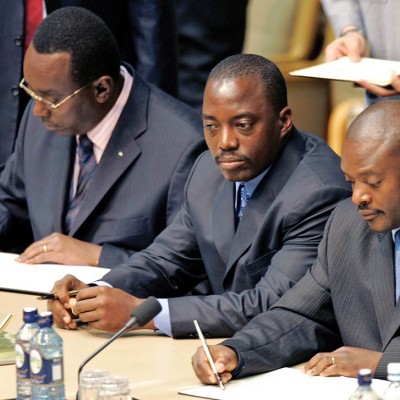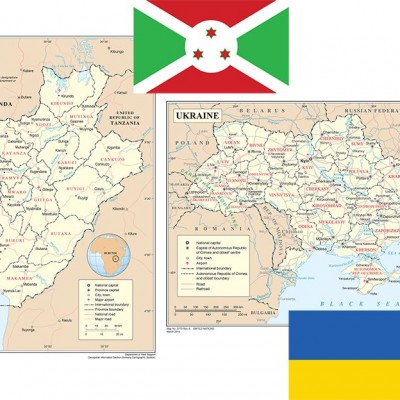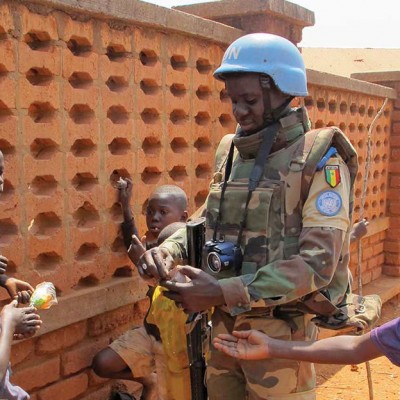Regional approaches to conflict prevention, mediation and crisis management have received increased attention over the past decade. They are particularly relevant today, when security threats often transcend state borders and challenge regional security. This is why regional intergovernmental organisations are key actors, offering regional approaches to security threats. They can ensure complementarity and subsidiarity between the United Nations (UN), continental organisations such as the African Union (AU) or the European Union (EU), their member states and civil society.1
Regional organisations are recognised as important building blocks in addressing regional peace and security issues.2 But how can they deal with crises that occur within or between their own member states? What enabling environment is required for them to make use of their political agency effectively, and what resources and capacities do they need to develop meaningful responses?
These questions are of particular interest when considering the Organization for Security and Co-operation in Europe (OSCE) and the International Conference on the Great Lakes Region (ICGLR).3
The OSCE includes 57 participating states, covering the area “from Vancouver to Vladivostok”. The organisation covers a range of activities – from conflict prevention to strengthening economic development and promoting the respect of human rights and freedoms. The OSCE takes a comprehensive view on security through its political-military, economic, environmental and human dimensions.
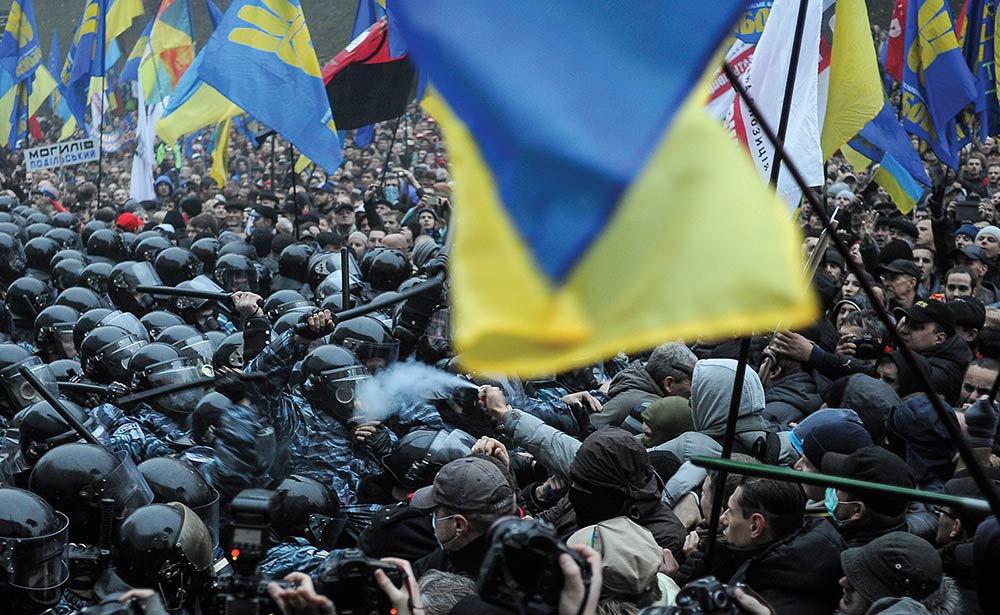
The ICGLR covers 12 countries in the African Great Lakes Region and aims to create conditions for security, stability and development between member states. It strives to do this through various forms of cooperation, including:
- defence;
- justice;
- natural resources;
- the protection of internally displaced persons and women;
- the prevention of violence; and
- the promotion of good governance.
Faced with such ambitious aims, the ICGLR and the OSCE have recently had to confront major crises within their respective areas. For the OSCE, it is the crisis in and around Ukraine, and for the ICGLR, it is the challenges raised by the crisis in Burundi. This article examines the responses to these crises by these two regional organisations, and provides initial considerations on factors that can strengthen the potential for meaningful regional responses.4
At a Juncture: Demise or Revival?
Following the end of the cold war and the fall of the Berlin Wall, the OSCE was perceived by many as circling in the backwater of international diplomacy. In the very early days of the crisis in and around Ukraine in 2013–2014, relations between the West and Russia deteriorated dramatically, and commentators suggested that it was time to write the OSCE’s obituary. Ironically, the crisis in Ukraine, which challenged the raison d’être of the OSCE and its fundamental values and norms, actually revived the OSCE’s political relevance, since this consensus-based regional organisation proved to be the only space for negotiations acceptable to all parties involved in the conflict.
The ICGLR was established in 2003 and covers almost all African states that took part in the ‘African World War’. It was set up under great encouragement from the UN, and with the facilitation of the AU. Its member states developed a very ambitious pact and protocols to guide its operation. However, the ICGLR was not provided with adequate resources to fulfil its mandate, and was described as “another framework promising much but threatening to deliver little”.5 The Burundi crisis, then, is a real threat to the political relevance of the institution.
The Crises in Burundi and Ukraine
The crises in Burundi and Ukraine flared up because of the domestic political contestations of key choices made by their respective leadership and their political entourages. But both are, to varying degrees, also linked to the internal socio-economic developments and aspirations of the population, as well as their ambiguous geopolitical position and the competing interests and interventions of outside powers.
Ukraine
In late 2013, Maidan Nezalezhnosti, the main square of Ukraine’s capital, attracted peaceful protesters gathering in response to the Ukrainian government’s decision to suspend integration into the EU. Seeking to leave Soviet legacies behind, protesters claimed that Ukraine belonged to Europe. Largely pro-Russian, the then-government in the Ukraine responded with violent crackdowns by riot police, which further mobilised hundreds of thousands of protesters on the streets – this time demanding the resignation of the government. The killing of protesters in early 2014 escalated the situation and eventually led to the flight of the then-president, Viktor Yanukovych.
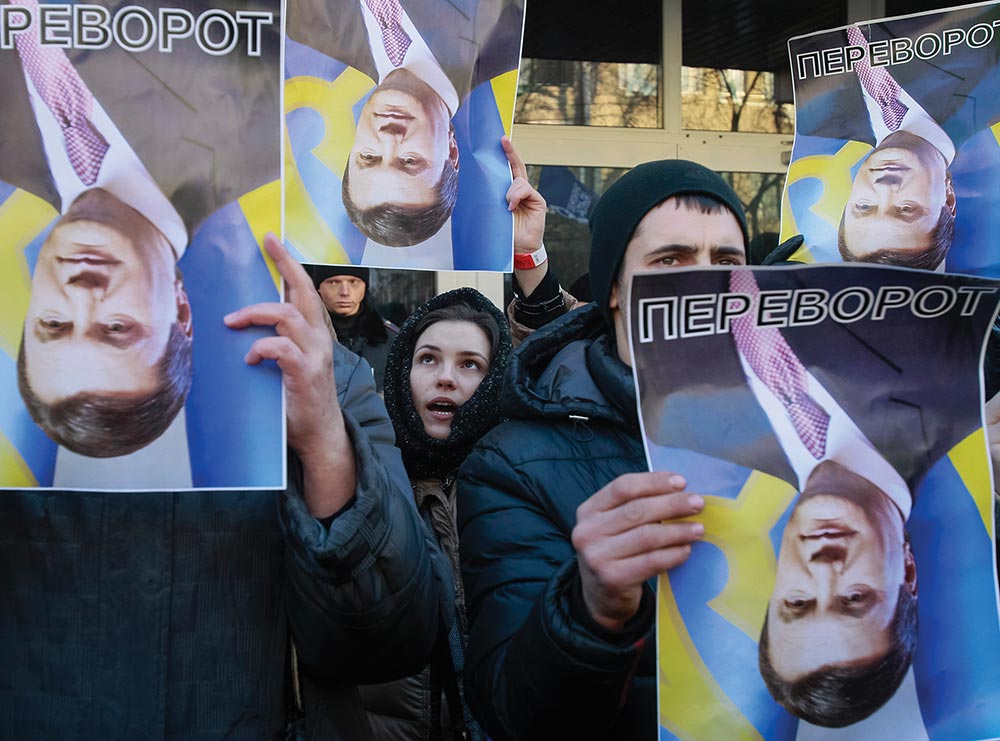
By the time elections were held and the new Ukrainian government came to office in 2014, tensions started to emerge in the mostly Russian-speaking eastern and southern regions bordering with Russia. Initially peaceful, the protests against the new government gradually escalated. They became violent and local government buildings were occupied by armed groups. This evolved into armed confrontations between the post-revolutionary Ukrainian government forces and volunteer battalions on one side, and pro-Russian separatist groups, supported by the Russian army, on the other. Eventually, heavy weaponry replaced small arms and light weapons.
Russian soldiers without insignias took over the Crimean Peninsula, using the pretext of protecting its Russian-speaking population. This resulted in the annexation of Crimea by Russia through an internationally unrecognised referendum, in March 2014. In September 2014 and February 2015, ceasefire protocols were signed between Moscow, Kyiv and pro-Russian separatists in east Ukraine. Although the ceasefire agreements are regularly violated, they currently provide a stabilising factor for engagement between the various parties, and prevent further escalation of violence.
At the time of writing, the UN estimates the death toll from the crisis at over 7 800 people, with over 17 000 wounded. One-and-a-half million people are displaced internally, and one million externally. Five million people are in need of support as an immediate consequence of the conflict.6
Burundi
At first, the most recent crisis in Burundi was a political and socio-economic contest. The party in power since 2005, the National Council for the Defence of Democracy – Forces for the Defence of Democracy (CNDD-FDD), won elections unopposed in 2010. This was a major setback for the consolidation of democratic institutions and processes and enabled the ruling party and its president, Pierre Nkurunziza, to run the country unilaterally for five years.
The process leading to President Nkurunziza running for a third term was vehemently – and, ultimately, violently – contested from 2013 onwards, with its culmination in 2015. A broad range of actors – from the church to the opposition party – protested against the legality of the third term and the poor socio-economic track record of Nkurunziza’s 10-year rule. The controversies around the preparations for elections, as well as the protests – first peaceful and then turning violent – triggered efforts at local, regional and international level to find a solution through mediation and dialogue, but without success. In April 2015, Nkurunziza was presented as CNDD-FDD’s presidential candidate. This sparked more demonstrations, mainly in the capital city of Bujumbura, accompanied by violence from police, militias and protesters. A failed coup attempt in May 2015 led to increased violent polarisation, leaving at least 439 dead by January 2016.7 Most independent media channels have been closed, civil society (seen as extensions of the opposition by the government) has faced threats, and more than 200 000 Burundians have sought refuge in neighbouring countries.8 Despite this hostile and fearful context, legislative and presidential elections were organised. The main opposition political parties boycotted elections, the CNDD-FDD won and Nkurunziza was sworn in as president for the third time on 20 August 2015. However, neither continental, regional nor international bodies considered the elections credible.

The Burundian government now faces an internal and external legitimacy problem. Since the elections, killings are reported on a daily basis – mainly in the capital city, but also in the countryside. Elements associated with the exiled opposition have announced a rebel movement, and killings have taken a more distinctive ethnic dimension. The EU, UN and AU have applied or threatened to apply sanctions. At the same time, member states on the continent have engaged the new government, with CNDD-FDD seen as the most likely stabilising factor, and therefore the need to work with them. Simultaneously, African states and regional bodies, including the ICGLR, have tried to mediate in the ongoing crisis.
Responses from the OSCE and ICGLR
Responses from the OSCE and the ICGLR to the respective crises in Ukraine and Burundi were developed at different levels. Centred at the political and operational levels, they were also complemented by ongoing structural measures by the two regional organisations, such as the promotion of human rights and freedoms, strengthening democratic institutions, and assisting with legal and judicial reforms.
Political Responses
Both the OSCE and the ICGLR initiated, supported or were involved in high-level diplomacy and multilateral dialogue between member states as political responses to the unfolding crises.
OSCE
Faced with a crisis that threatened its very existence as a regional intergovernmental organisation, the OSCE was able to seize the political window of opportunity that presented itself after other international and regional actors, including the EU, were unable to tackle the challenge of the crisis in Ukraine.

The initial political response provided by the OSCE was through its most senior political arm, the OSCE Chairperson-in-Office. Since the early days of the crisis, the Chairmanship engaged participating states at the presidential and ministerial levels, aiming to reach a diplomatic solution. In early 2014, the Chairmanship addressed the UN Security Council on the crisis and proposed an assessment mission to Ukraine and the establishment of an international contact group. Later in the year, the Chairmanship, together with the governments of Ukraine and the Russian Federation, established a Trilateral Contact Group, with the OSCE facilitating dialogue between the two states. This work resulted in the signing of the Minsk Agreements, which included measures to alleviate the war in the eastern region of Ukraine. While a major step in stabilising the situation, the agreements have not been fully implemented so far.

Parallel to the OSCE’s efforts, the Chairmanship’s engagement in diplomatic dialogue was particularly helpful in ensuring that all 57 of OSCE’s participating states unanimously agreed to deploy the Special Monitoring Mission (SMM) to Ukraine. Within 24 hours of the decision, the OSCE Secretariat, based in Vienna, Austria, mobilised the deployment of civilian observers drawn from different OSCE field missions.
ICGLR
The Burundi crisis saw a broad range of actors attempting to play an intervening role. These actors included the UN, which initially took a central role in trying to facilitate dialogue among all parties, building on its longstanding involvement in Burundi through its various missions and envoys. However, at some point, trust in the various UN envoys was revoked, by either the government or members of the opposition. The AU took explicit and strong positions on both the government and the opposition. The Common Market for Eastern and Southern Africa sent delegates to Burundi, in conjunction with the Eastern African Community (EAC) Panel of Eminent Persons. After various other initiatives failed, the EAC designated Ugandan president Yoweri Museveni as its mediator for the Burundi crisis. This process is ongoing, and has been backed by the other international organisations that attempted to align some of their initiatives. The ICGLR participated, assisted or co-authored many of these initiatives, but it did not take a leading role.
In contrast to the Ukrainian situation, where the OSCE filled a void left by other international bodies, the ICGLR, faced with the presence of a multitude of actors and with a small secretariat, limited resources and divisions among some of its key members on Burundi, was ill placed to take a lead role in responding to the crisis.
Responses on the Ground
At the operational level, both regional organisations tried to build on or develop a solid institutional response to the crises. The OSCE set up the SMM as an innovative tool to monitor the ceasefire agreement and the security situation. The ICGLR, on the other hand, offered to use its existing conflict prevention instrument – the Expanded Joint Verification Mechanism (EJVM) – to monitor the alleged presence of armed militias involving other member states.
OSCE – the Special Monitoring Mission
Following the agreement brokered at the political level, the OSCE SMM was initially set up to assist in facilitating dialogues in Ukraine. However, as the crisis evolved, the objectives of the mission transformed. Consisting of more than 756 international observers from more than 40 OSCE participating states, the mission provides the international community with fact-based reports on security situations and developments on the ground.9 Largely perceived as a credible source of impartial information, the mission also monitors the human rights situation and, importantly, the implementation of the ceasefire protocol. In addition to the monitoring function, the SMM has developed contacts with different parties, allowing it to facilitate dialogue as a de-escalation measure and to establish humanitarian corridors.
As the largest-ever deployed OSCE civilian peace operation, its presence is not sufficient to end the military confrontation, but it certainly is a deterrent that prevents further escalation.
ICGLR and other regional organisations
Due to its supportive political role and limited technical and financial resources, the ICGLR is not in a position to develop a far-reaching operational response to the Burundi crisis. Intervention measures available under the ICGLR were, however, invoked by the EAC and the government of Burundi itself, in response to the formation of armed militia. At its July 2015 summit, the EAC requested the ICGLR, through its EJVM, to verify allegations of the presence of the Democratic Republic of the Congo-based militia Democratic Forces for the Liberation of Rwanda (FDLR) in Burundi. The EJVM consists of a team of 24 senior military officers drawn from the member states of the ICGLR, and is a prevention mechanism aimed at jointly raising and addressing potential violent conflict situations among member states. The EJVM undertook an investigation into the FDLR presence in Burundi and presented its findings to the ICGLR Chairperson. These findings have not been shared in public, but were discussed by the ICGLR ministers of foreign affairs during their October 2015 Extraordinary Meeting.
The Burundian government engaged the ICGLR in response to reports of Rwandan support for the recruitment of ex-combatants to destabilise Burundi. It accused Rwanda of acts of aggression against its territory, and requested an EJVM mission to Rwanda. The ICGLR attempted to deploy such a mission, but Rwanda refused.
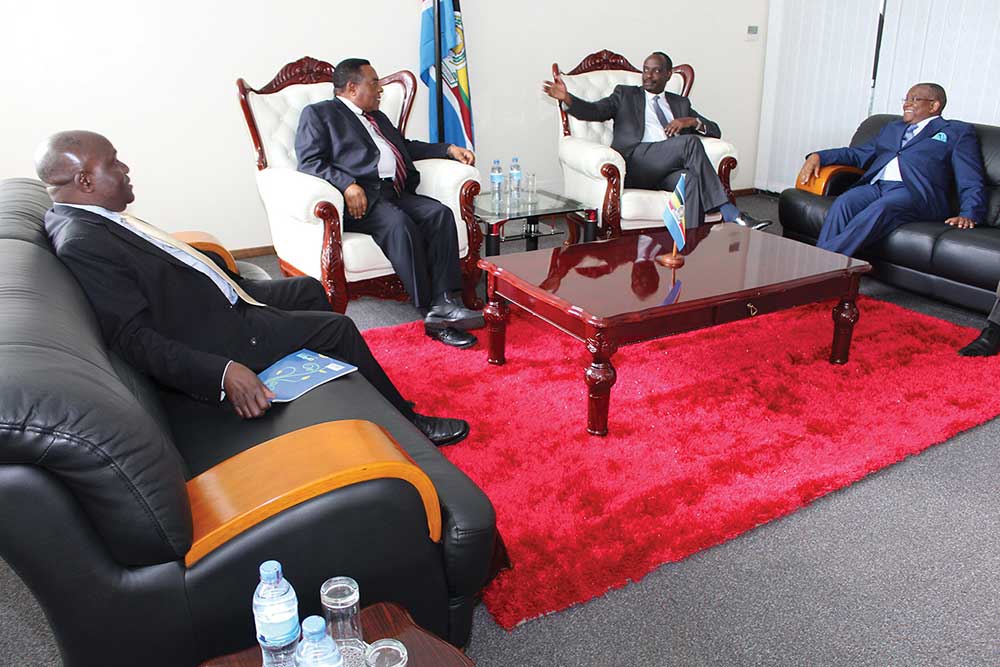
With a less prominent role given to the ICGLR, the EAC has been attempting to host an inter-Burundian dialogue after the UN’s efforts faltered. To bolster this dialogue, and considering the limited regional capacities, the AU has also taken a more prominent role in Burundi as part of its complementarity function. It sent a special envoy and deployed a number of human rights observers in the country and, in its strongest move yet, its Peace and Security Council authorised the deployment of a 5 000-strong African Prevention and Protection Mission to Burundi.10 To do this, the |AU invoked a provision in the AU Constitutive Act, which allows it to act in a country “in respect of grave circumstances, namely: war crimes, genocide and crimes against humanity” if its Assembly of Heads of State agrees to it.11 Whether this mission will be brought into effect and authorised will depend both on political momentum and technical and financial resources. However, to be successful, it will need to move in tandem with the inter-Burundian political dialogue.
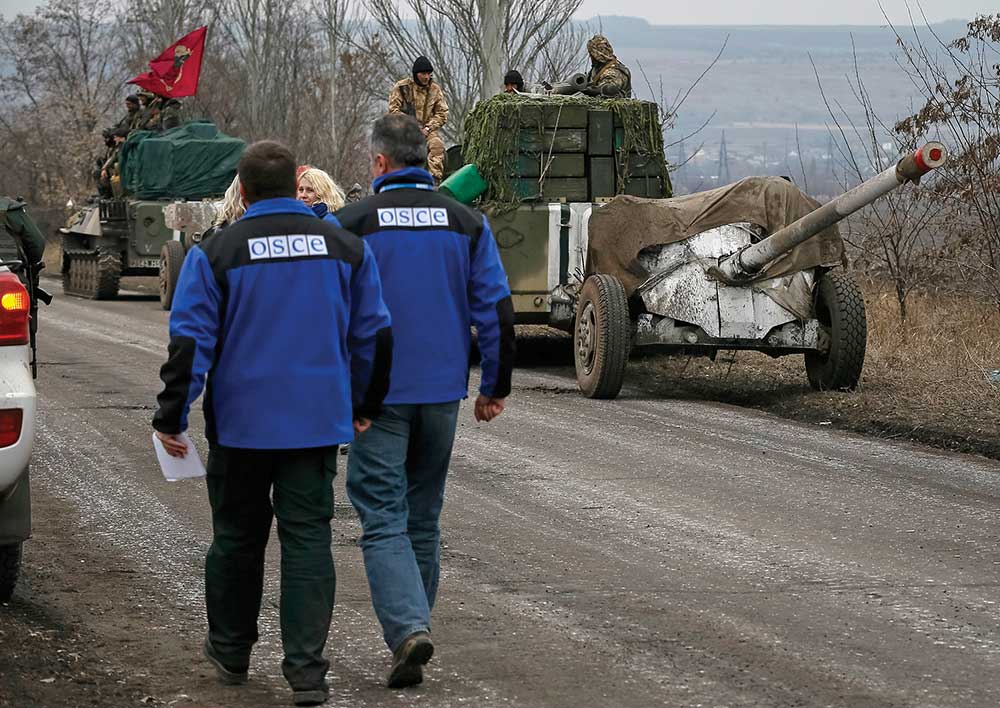
Conclusions
The ICGLR and the OSCE offer a standard of behaviour for their members and provide means for reducing tensions through the constitutive documents, programmes and toolbox they have developed over time. The importance of the mere existence of an inclusive and consensus-based regional arrangement cannot be overemphasised. It has enabled both Ukraine and Russia to engage across the divide, and has provided the operational basis for joint interventions such as the EJVM in the Great Lakes Region. Through their inclusive nature, regional organisations offer regional platforms that can accommodate different political processes, even if participating states disagree on norms and values or confront each other politically or militarily. The levels and issues for which each regional organisation can be used will, however, depend significantly on the enabling environment and the capacity and resources available at a given time.
The OSCE faced an environment in which other regional and international players were ill placed to play a strong role, and it took centre stage, almost by default. Political confrontation, mistrust and diverging values between Russia and the West strongly influenced the relations between participating states in the OSCE. However, its consensus-based principles and a common agenda around decreasing tensions in Ukraine made it possible for the OSCE to step in. In contrast, the ICGLR faced limitations in its operating environment, including the physical location of the secretariat in the crisis country and a divided membership, while other regional bodies took a more important role in the Burundi crisis. An inclusive, consensus-based approach that ensures the practical alignment of member states appears to be a key factor for regional organisations to be successful building blocks for peace and security. This must be supplemented by the principles of complementarity, subsidiarity and coordination, so that other regional and international organisations reinforce existing initiatives or address shortcomings.
For the potential of such regional arrangements to be fully exploited, adequate political backing is essential. A lesson that can be drawn from the OSCE’s response to the Ukraine crisis is that an operation designed to build or keep peace needs the support of a clear and practical political strategy by the leadership of a regional organisation that is also supported by its membership.
There is also a need for adequate long-term resourcing of such institutions. While the OSCE was able to deploy a sizeable monitoring mission in a very short period of time, the ICGLR has neither the infrastructure nor the resources at its disposal to do so. By the same token, the OSCE’s current German Chairmanship emphasised that the Ukraine crisis highlighted the need to strengthen the OSCE’s capacities over the entire conflict cycle.12 At the ICGLR, an encouraging conflict prevention tool such as the EJVM remains severely underfunded. Increased and sustained financial and political support for regional international governmental organisations by member states and international partners is needed.
Finally, regional organisations must pay adequate attention to longer-term inclusive processes. The Burundi crisis has highlighted the need for continued engagement by the international and regional community, and key member states to adhere to and expand on political settlements. Local actors such as civil society, women and youth groups need to be engaged alongside political and government actors, to achieve progress on signed agreements. Only through sustained engagement with all actors combining technical and political assistance can, for example, an institution such as the National Truth and Reconciliation Commission, agreed upon in the Arusha Agreement for Burundi, become a useful and timely tool for the aims originally envisaged. The long delays and politicising in the establishment of this commission left it with too little time, legitimacy and capacity to undertake its crucial tasks effectively. There is a need for longer-term sustained engagements to ensure the follow-through of agreements reached, from the international and interstate level down to local communities.13 Regional organisations are ideally placed to play a key ‘conveyer belt’ role in such processes, linking and ensuring complementarity between local, national, regional and international levels. This role needs further bolstering by strengthening, expanding and resourcing instruments at their disposal, if regional organisations are to move beyond merely promising frameworks that deliver little.
Endnotes
- See, for example: Makinda, Samuel M., Okumu, F. Wafula and Mickler, David (2015) The African Union: Addressing the Challenges of Peace, Security, and Governance. Routledge.
- See, for example, African Union(2008) ‘Memorandum of Understanding on Cooperation in the Area of Peace and Security between the African Union, the Regional Economic Communities and the Coordinating Mechanisms of the Regional Standby Brigades of Eastern Africa and Northern Africa’, Available at: <http://www.peaceau.org/uploads/mou-au-rec-eng.pdf> [Accessed 12 January 2016].
- This is of particular interest, also because the OSCE has often been cited as an inspiration for the development of the ICGLR, and both organisations share similar institutional architectures. See Heyl, Charlotte (2010) The International Conference on the Great Lakes Region – An African CSCE? In: Wahlers, Gerard (ed.) ‘KAS International Reports 12/2010’, pp. 87–105, Available at: <http://www.kas.de/wf/en/33.21242/> [Accessed 20 December 2015].
- See the websites of the two organisations for more information: www.osce.org and www.icglr.org.
- Deirde, Clancy (2011) Lessons from a State of Flux: The International Justice Laboratory of the Great Lakes Pact. In Lutz, Oette (ed.) Criminal Law Reform and Transitional Justice: Human Rights Perspectives for Sudan. Farnham, Surrey: Ashgate, p. 213.
- United Nations Office for the Coordination of Humanitarian Affairs (2016) Humanitarian Bulletin Ukraine, 5, Available at: <https://www.humanitarianresponse.info/en/operations/ukraine/document/humanitarian-bulletin-ukraine-issue-05> [Accessed 20 January 2016].
- United Nations Human Rights Office of the High Commissioner (2016) ‘Alarming New Patterns of Violations Emerging in Burundi’, Available at: <http://www.ohchr.org/EN/NewsEvents/Pages/DisplayNews.aspx?NewsID=16953&LangID=E> [Accessed 22 January 2016].
- United Nations Office for the Coordination of Humanitarian Affairs (2016) ‘Burundi: Humanitarian Snapshot’, Available at: <http://reliefweb.int/report/burundi/burundi-humanitarian-snapshot-14-january-2016> [Accessed 21 January 2016].
- Organisation for Security and Cooperation (2015) ‘OSCE Response to the Crisis in and Around Ukraine’ Available at: <http://www.osce.org/home/125575?download=true> [Accessed 20 January 2016].
- African Union (AU) (2015) ‘Communiqué of the 565th Meeting of the PSC on the Situation in Burundi’, Available at: <http://www.peaceau.org/en/article/communique-of-the-565th-meeting-of-the-psc-on-the-situation-in-burundi> [Accessed 19 January 2016].
- AU (2000) ‘Constitutive Act of the African Union’, Available at: <http://www.au.int/en/sites/default/files/ConstitutiveAct_EN.pdf> [Accessed 22 January 2016].
- OSCE (2016) ‘Renewing Dialogue, Rebuilding Trust, Restoring Security: The Priorities of the German OSCE Chairmanship in 2016’, p. 5, Available at: <http://www.osce.org/cio/215791?download=true> [Accessed 21 January 2016].
- While regional organisations are used to working with states, engaging with non-state actors and local communities poses new challenges and is often done on an ad hoc and/or limited fashion. The ICGLR provides an interesting and innovative example of how to structure engagements with non-state actors in an ongoing basis through its various inclusive fora.


